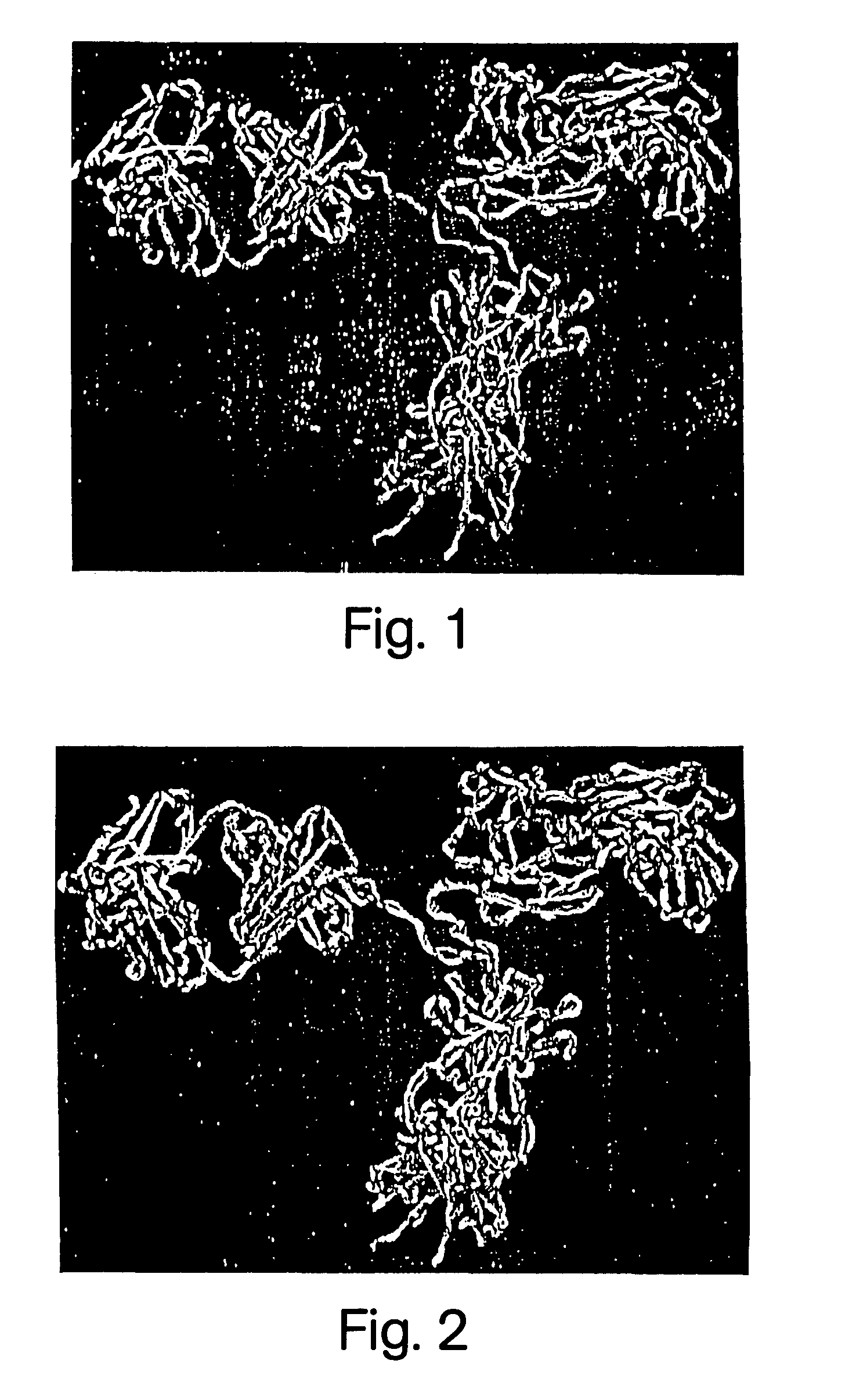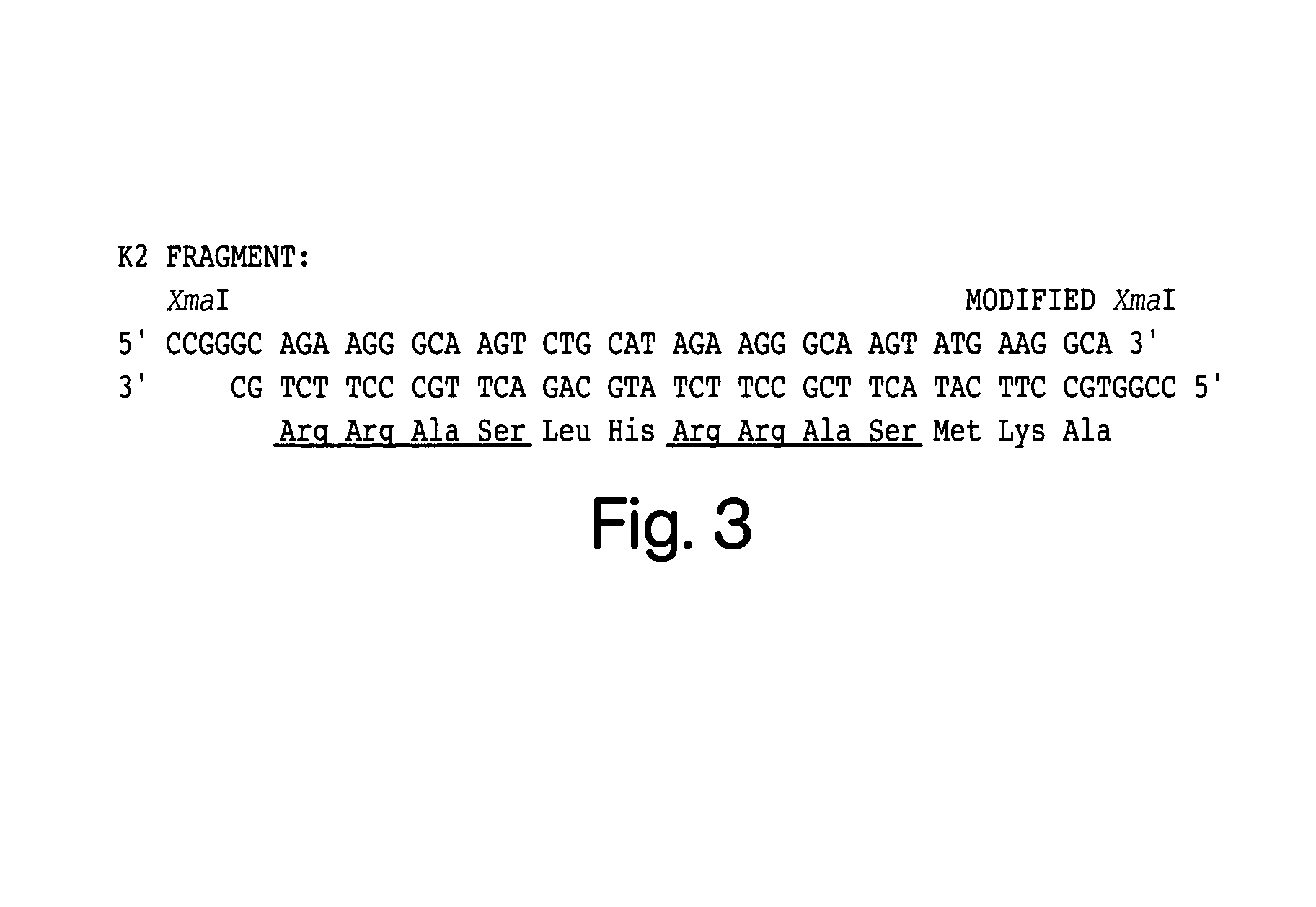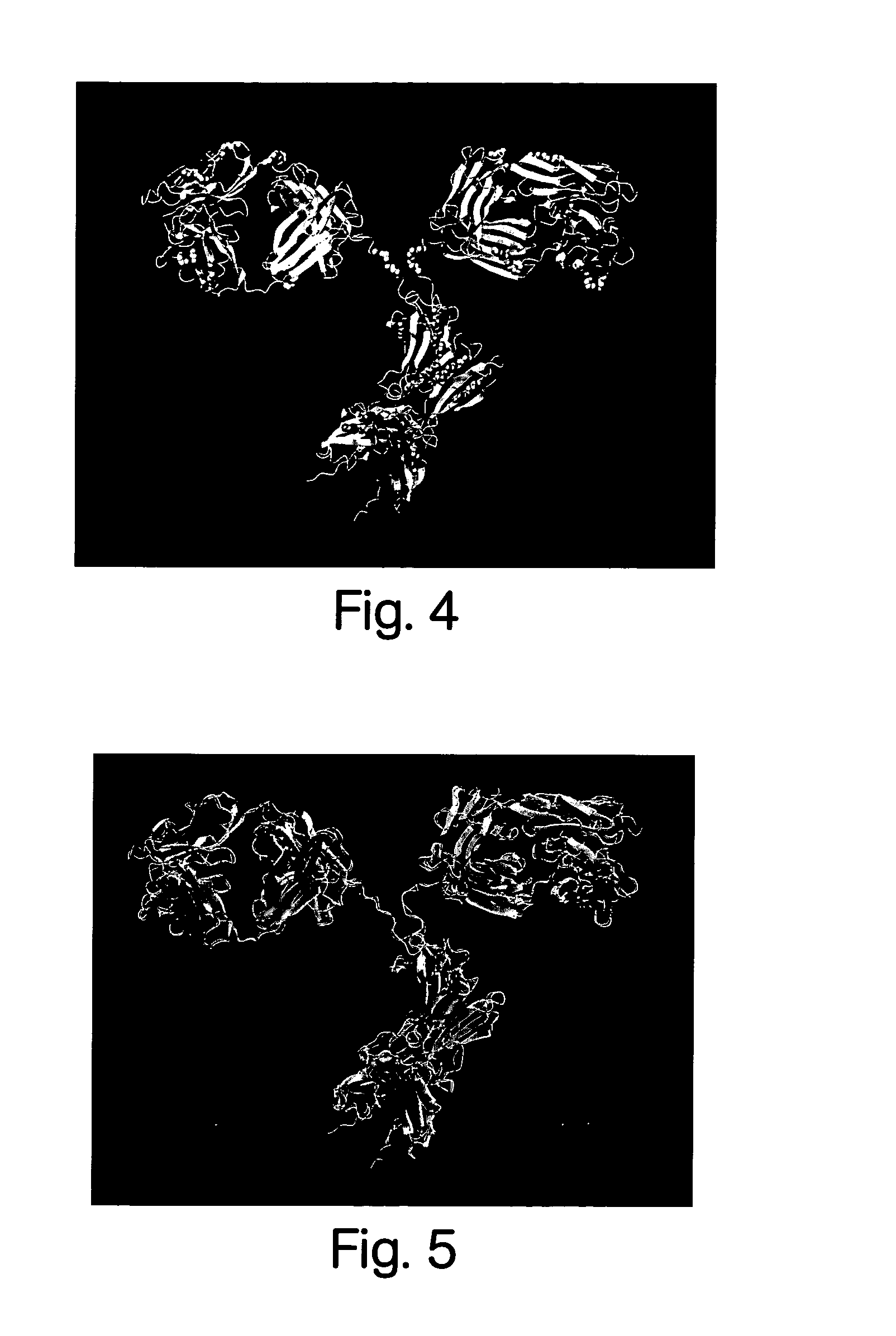Phosphorylated polypeptides and uses related thereto
a polypeptide and phosphorylation technology, applied in the field of phosphorylated polypeptides and related uses, can solve the problems of significant inactivation of the mab, heterogeneous population of labeled mabs, health problems for patients and health care personnel, etc., and achieve the effect of improving over the time-consuming and rather inefficient trial-and-error approach
- Summary
- Abstract
- Description
- Claims
- Application Information
AI Technical Summary
Benefits of technology
Problems solved by technology
Method used
Image
Examples
example 1
[0108]Example 1 is intended to show the generation of WW-series of phosphorylated monoclonal antibodies that are much more stable than other phosphorylated monoclonal antibodies.
I. Materials and Methods
A. Enzymes, Reagents and Chemicals
1. Enzymes
[0109]All restriction endonucleases, the Klenow fragment of DNA polymerase I were purchased from New England Biolabs, Gibco / BRL Life Technologies, or Boehringer-Mannheim Biochemicals. The catalytic subunit of the cAMP-dependent protein kinase from bovine heart (Cat. No. P-2645) was purchased from Sigma Chemical Co.
2. Reagents
[0110]Goat anti-human IgG (Fc specific) antibody (Cat. No. I-2136) was purchased from Sigma Chemical Co. Mouse serum (Cat. No. 015-000-120) was purchased from Jackson ImmunoResearch Laboratories, Inc. The Geneclean kit (Cat. No. 3106) was purchased from Bio101. PFHM-II protein-free hybridoma medium was purchased from Gibco / BRL (Cat. No. 12040-077). Iscove's Modified Dulbecco's Medium was purchased from Gibco BRL (Cat. No...
example 2
[0281]Example 2 is intended to compare the stabilities of phosphorylated monoclonal antibodies with engineered phosphorylated sites.
I. Materials and Methods
[0282]In the present study, the SYBYL molecular modeling package (version 6.5; Tripos Association, St. Louis, Mo., 1999) was used for structural analysis and geometry refinement. Most of the homology and mutant modeling was performed with the LOOK 3.5 program (Molecular Application Group, Palo Alto, Calif.). For the geometry optimization, Kollman united charges, molecular mechanics force field and the MAXIMIN2 minimizer of SYBYL were used. All these visualization analyses and simulations were performed on Silicon Graphics Octane workstations.
1. Template
[0283]The crystal structure of the intact MAb231, was used as template to model MAb-chCC49. These coordinates are now available from the Polypeptide Data Bank (PDB) as ID 1IGT. Because the crystal structure of MAb231 was previously the only one available for an intact antibody, MAb...
PUM
| Property | Measurement | Unit |
|---|---|---|
| Temperature | aaaaa | aaaaa |
| Fraction | aaaaa | aaaaa |
| Fraction | aaaaa | aaaaa |
Abstract
Description
Claims
Application Information
 Login to View More
Login to View More - R&D
- Intellectual Property
- Life Sciences
- Materials
- Tech Scout
- Unparalleled Data Quality
- Higher Quality Content
- 60% Fewer Hallucinations
Browse by: Latest US Patents, China's latest patents, Technical Efficacy Thesaurus, Application Domain, Technology Topic, Popular Technical Reports.
© 2025 PatSnap. All rights reserved.Legal|Privacy policy|Modern Slavery Act Transparency Statement|Sitemap|About US| Contact US: help@patsnap.com



